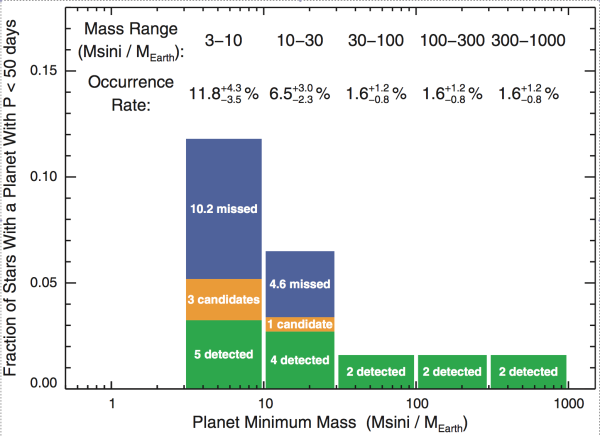![]()
![]() This week, rather excitable speculations about a NASA press conference were somewhat punctured when in turned out to be about the discovery of some exotic, but determinedly terrestrial, Californian lake bacteria that incorporate arsenic instead of phosphorous into their cell structures if we force them. Ed Yong provides a great write up, and other people discuss how a PR mistep (note to NASA: in the future, do not refer to stuff you find on this planet as ‘astrobiological discoveries’) and the determined maintenance of the Science embargo allowed speculation the flourish in the absence of people in the know being allowed to say what the research was actually about.
This week, rather excitable speculations about a NASA press conference were somewhat punctured when in turned out to be about the discovery of some exotic, but determinedly terrestrial, Californian lake bacteria that incorporate arsenic instead of phosphorous into their cell structures if we force them. Ed Yong provides a great write up, and other people discuss how a PR mistep (note to NASA: in the future, do not refer to stuff you find on this planet as ‘astrobiological discoveries’) and the determined maintenance of the Science embargo allowed speculation the flourish in the absence of people in the know being allowed to say what the research was actually about.
It’s certainly fascinating to read about the latest unexpected biochemical trick that bacteria are capable of, and it does once more demonstrate our ignorance of the true biochemical range in which life-like processes can occur. However, beyond the broad cautionary point that we need to moderate our Earth-centrism when looking beyond it, I struggle to see more than a tenuous link to the search for extraterrestrial life. But it did remind me of another Science paper that came out about a month ago, which doesn’t talk about extra-terrestrial life per se, but does present some promising data regarding the abundance of potential homes for it.
In the study, UC Berkeley astronomer Andrew Howard and his co-authors looked for planets around a pre-selected group of 166 stars with similar masses and temperatures to the Sun (yellow G- and orange K-types). Planets were identified by looking for slight deviations in a star’s motion towards or away from the earth due to the gravitational pull of an orbiting body (to date, this radial velocity technique has been the most successful way of finding exoplanets). The team found 33 planets around 22 of the stars, but in this paper they concentrate on the 16 of these that have an orbital period of less than 50 days. Their Figure 2 below shows the range of masses that these planets are calculated to have, ranging from ‘Super-Earths’ with between 3 and 10 times the mass of our own planet, to planets larger than Jupiter (which is about 300 times the mass of the Earth). The plot also includes ‘candidate’ and ‘missed’ planets’. The former are probable planet detections which still need further observations to rigorously confirm. The latter is an attempt to account for the fact that the lower mass planets are approaching the current detection limits for the radial velocity technique, and the data collected from some of the stars surveyed are not yet sufficient to confirm or deny their presence. The number of ‘missed’ planets is extrapolated from the rate of detections from stars where the observations are sufficient to find them or rule them out.

Mass-frequency distribution of exoplanets with an orbital period of less than 50 days identified by Howard et al.
(note: there is some discrepancy in the numbers of planets given at various points in this paper. The text and another less easy to interpret figure indicate 16 confirmed planets with an orbital period of less than 50 days, whilst there are only 15 in this figure – the missing one is in either the 3-10 or the 10-30 Earth mass bins. Likewise, a 4th candidate planet in the 3-10 Earth mass bin is missing from this plot)
What these data appear to show is that within the same orbital range, there are more low mass planets than high mass ones – possibly a lot more. This trend is apparent even if we just restrict ourselves to looking at the firm detections; the candidate and missed planets just strengthen it. This is very promising, but two key questions remain. Firstly, does this trend continue into lower mass ranges – Earth-like mass ranges? If it does, the authors calculate there a planet with between 1 and 3 Earth masses, and an orbital period of less than 50 days, will be found around 1 in 4 of these types of star. The second question is, does this relationship hold true in longer orbits – say, orbital periods of a few hundred days? Although there is no data from the lower end of the mass range, the authors argue that more smaller, Neptune mass exoplanets have been found in wider orbits than bigger, Jupiter mass ones, which suggests, but does not confirm, that there are more low-mass planets in these realms too. Extrapolating further, the authors claim that there is about a 1 in 6 chance that a sun-like star has a 1-3 Earth mass planet in some orbit around it.
Projecting from known data into the unknown regions we’re actually interested in is a risky business, so all of this is still very tentative. Fortunately, in the next few years there will be actual data from Kepler and Corot to compare these projections against. However, these results raise the tantalising possibility that there may be a lot of Earth-mass rocky planets orbiting other stars. Who knows, some of them may even turn out to be home to arsenic-based microbes.
Howard, A., Marcy, G., Johnson, J., Fischer, D., Wright, J., Isaacson, H., Valenti, J., Anderson, J., Lin, D., & Ida, S. (2010). The Occurrence and Mass Distribution of Close-in Super-Earths, Neptunes, and Jupiters Science, 330 (6004), 653-655 DOI: 10.1126/science.1194854



Comments (3)